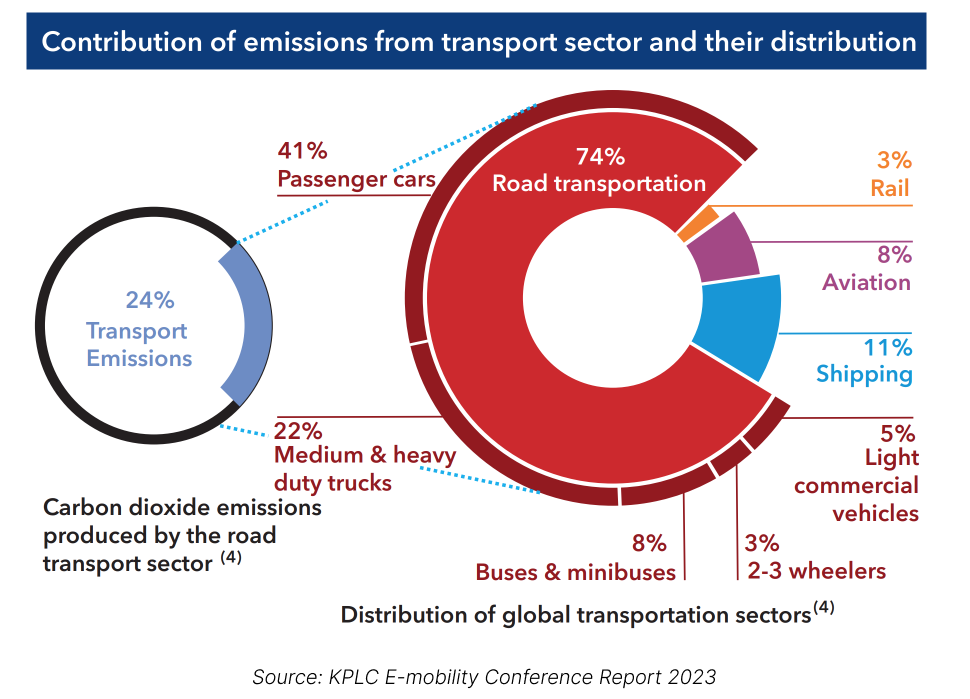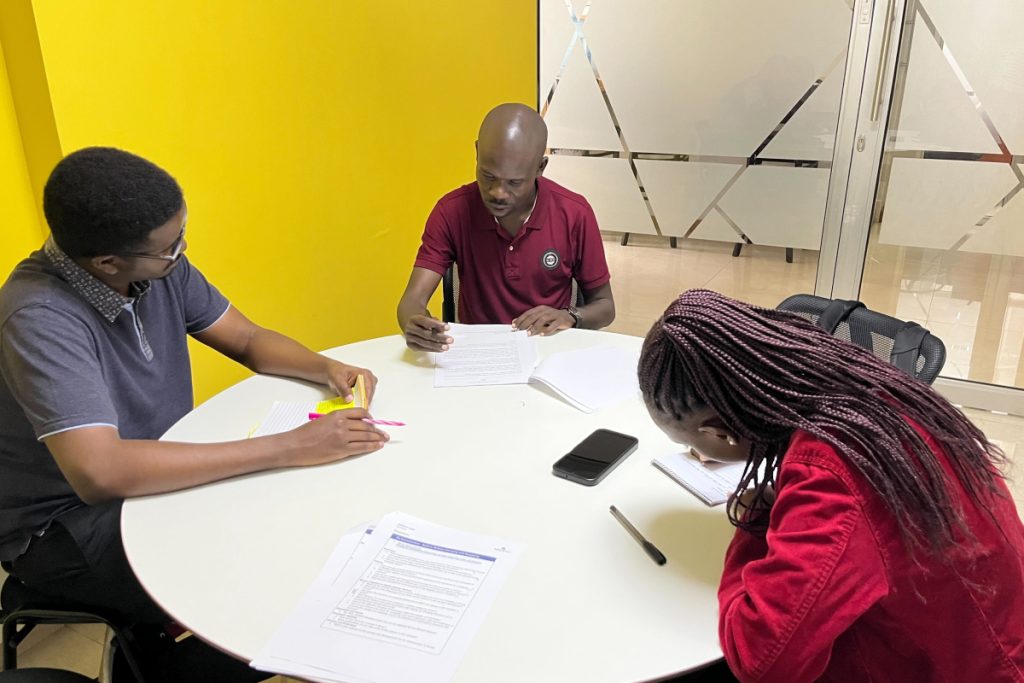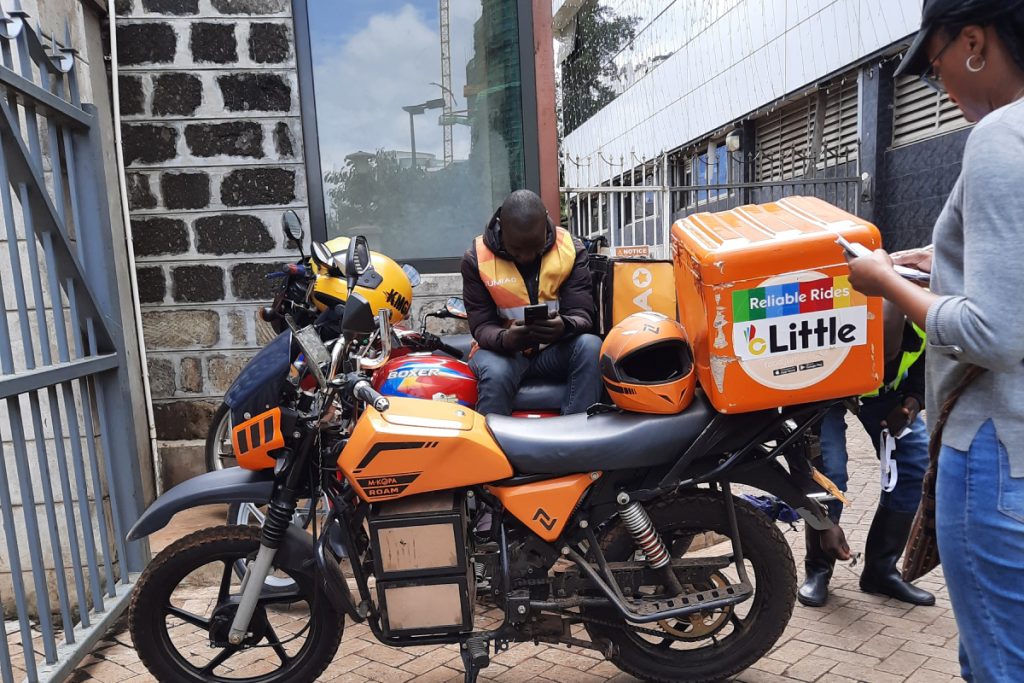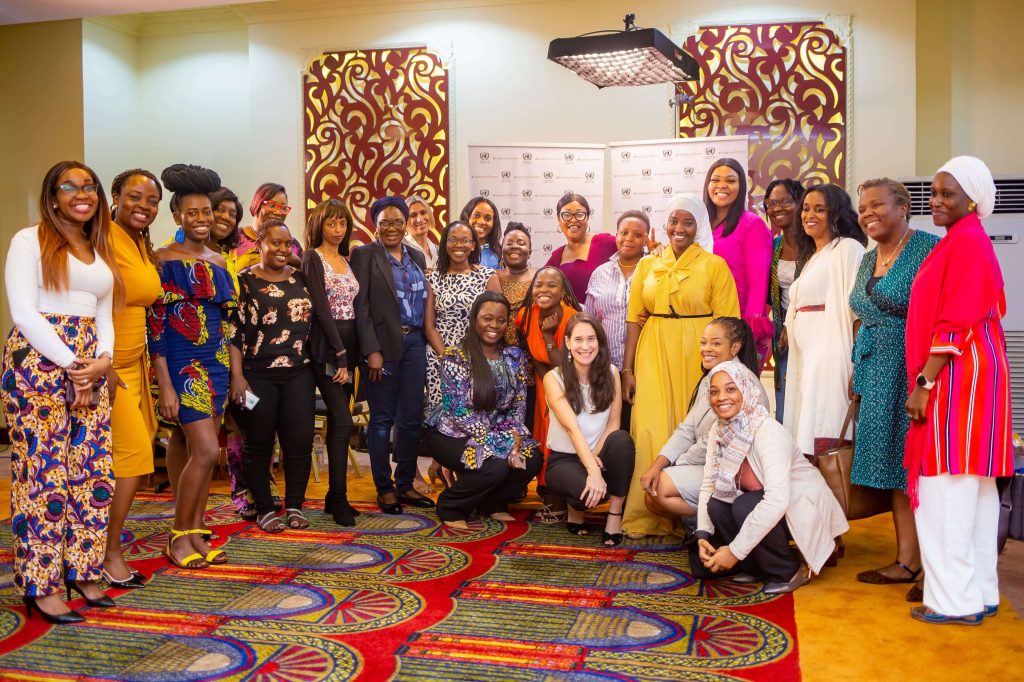A HCD approach to understanding Kenya’s E-mobily landscape
Client
- Mideva
Category
- Research
- Initiatives
Location
- Kenya
Duration
- Ongoing: Phase 1
Project Brief
The quest for sustainable transport
The climate action agenda is currently taking preeminence in international policies, laws, and national/international programs. International frameworks, agreements and national commitments to prioritize climate action have been extensively drawn over the last decade.
To address climate change, countries adopted the Paris Agreement to limit global warming to well below 2 degrees Celsius. The main driver of this global warming is greenhouse gas emissions, of which CO2 gas accounts for 76% of all emissions (C2ES,2019). Notably, the transportation sector is the second-largest source of CO2 emissions globally, contributing approximately 25% of total emissions (IEA 2021c).
In Kenya, the transport sector accounts for 37% of CO2 emissions, and the emissions are increasing at a faster rate than in any other sector (EDGAR, 2022). A focus on electric mobility therefore presents an optimal avenue to target GHG emissions reduction.
Amongst the various methods of mobility to be considered, road transport is the biggest sub-sector going by average proportionate GHG emissions (74%) (IPCC, 2020) hence the rationale to focus this project on the subset of electric vehicles(EVs).

Kenya is still in its formative stages of embracing e-mobility, both policy-wise and uptake-wise. Currently, the uptake rate of electric vehicles (EVs) is at 0.03%, representing 1350 EVs out of the total 4.4 Million registered vehicles.
Some of Kenya’s sustainable
transport goals
5%
Of all registered vehicles in Kenya will be electric powered by 2030
3.46 MtCO2e
Reduced emissions against the baseline in 2030
32%
Reduced greenhouse gas (GHG) emissions by the year 2030 compared to the business as usual (BAU) (143 MtCO2e)
Our Focus on E-Mobility
Addressing the information gap in the E-Mobility ecosystem
An important often-neglected aspect in e-mobility is social research. We believe this is an important ecosystem component in driving uptake
- There are high-level market reports on e-mobility but there still exists a need for in-depth comprehensive market intelligence reports of the Kenyan e-mobility market that touches on both the quantitative and social econometrics needed to wholesomely understand the market.
- Some of the challenges cited by E2W users include generic bicycle features that are not contextualized for Kenyan roads and BAAS swapping operations models that do not optimize the users routine and goals. This could be mitigated by in-depth research on understanding not only the user’s mobility needs but also the ecosystem surrounding their operations.
- By observation, the main research approach opted for by most market players have used unbalanced randomization, have been largely semi-scientific research and neglected the social aspect of research, which does not unlock much of the useful low-level insights.
- Rapid progress in electric mobility necessitates innovative approaches which can be triggered by social-side research introspection on the landscape, and granulated understanding of the nature of consumers.
The Vision
How might we support organizations and partners in the e-mobility ecosystem design more user-centered solutions?

Our interest in e-mobility is 3-Fold:
- One of our strategic focal pillars in Climate and Sustainability impact
- Nascent Sector
- Narrow the information & data gaps necessary to drive uptake

We are undertaking an
E-Mobility Series Approach
Phase 1

Consumer Needs in E2W space
How might we better understand user needs to help guide EV 2-wheeler providers to deliver contextual products and services for the Kenyan market?
Research Objectives
- To explore the 2-Wheeler ecosystem landscape in Kenya including use-cases and ecosystem linkages
- To identify and understand the 2-Wheeler Users needs and pain points in the Kenyan Electric vehicles market.
- To explore the role of culture and communities within Kenya, in shaping 2-Wheeler Users’ needs and preferences of EV’s
- To develop actionable recommendations for EV 2-Wheeler Providers and other key stakeholders in Kenya based on the research findings so as to deliver user-centered models







Who we have engaged
100%
Of the top 3 Electric Bicycle Retailers
50%
Of the top 8 Electric Motorcycle Retailers with assets
75%
Of the 4 EMAK registered Charging Infrastructure Providers
2
E4W retailers/Fleet managers
25%
Of the 4 main E3W retailers/Fleet managers
33%
Of the top 6 Financiers (Both Micro-lenders & B2B financial institutions)
1
Development Agency
2
Industry Groups
Want to learn more about the project or partner with us?
Related Case Studies
Design Sprint, Research, Facilitation, Prototyping
Design Thinking Facilitation, Course Design, Venture Design Support
- © 2023 Mideva Ventures | All Rights Reserved

